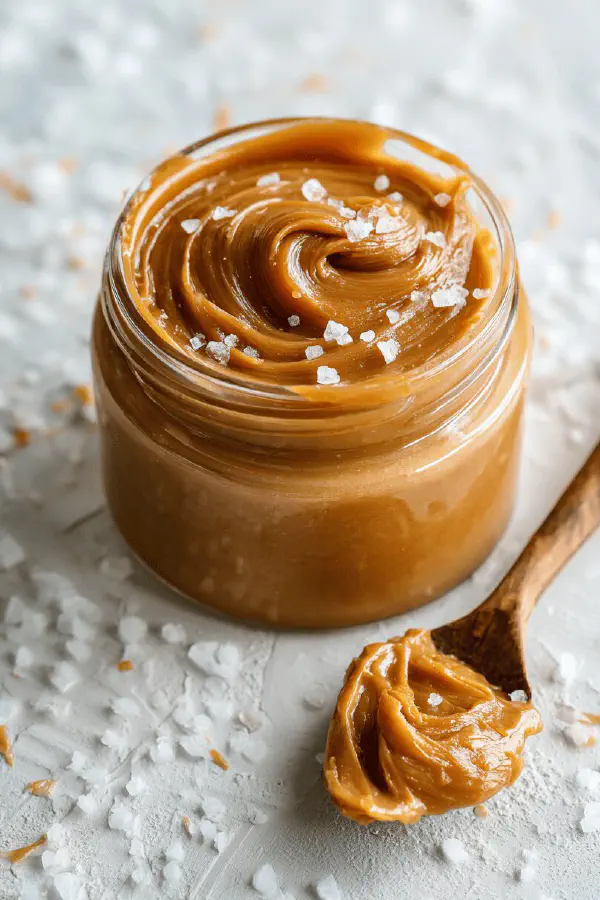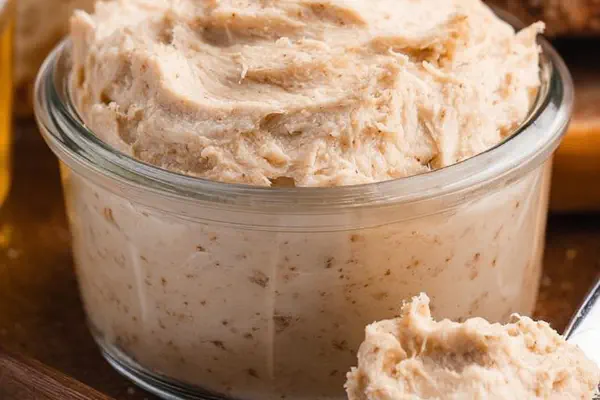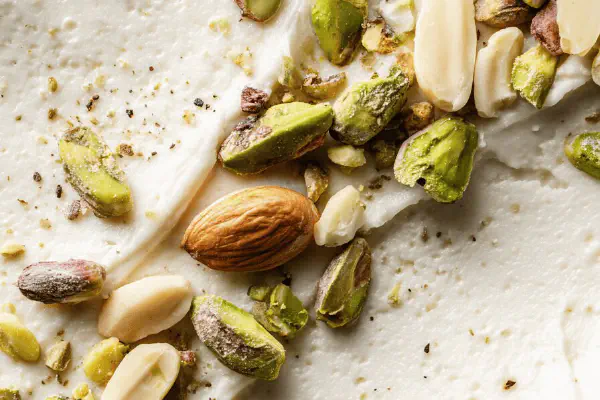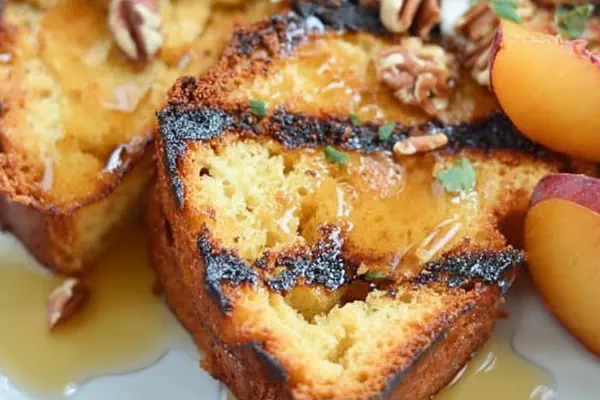Featured Recipe
Salted Butter Caramel Spread

By Kate
"
A rich salted butter caramel spread made with water, granulated sugar, light corn syrup replaced by golden syrup for deeper flavor, and heavy cream switched to half and half for a lighter texture. Butter replaced with unsalted butter plus added sea salt flakes for adjustable saltiness. Caramel cooked to amber state, finished with gradual cream incorporation for smoothness. Perfect for jars, holds 2 weeks at room temp, 1 month refrigerated. Watch for bubbling intensity and color shifts. No stirring caramel to avoid crystallization. Easy to tweak salt and sweetness balance.
"
Prep:
10 min
Cook:
20 min
Total:
30 min
Serves:
3 jars of 250 ml
dessert
spread
recipe
Introduction
Caramel starts in that yellow-gold phase, bubbling fiercely but still transparent. Wait for that sweet smell to shift—smoky, toasted, deep. Then comes the tricky part: adding cream without turning it into a mess. Use half and half instead of heavy cream to keep it lighter on the palate, but warmed — cold dairy wrecks the texture, triggers dangerous splatter. Butter provides richness, but unsalted plus coarse sea salt flakes let you control the salt kick precisely—skip the guesswork. No stirring the sugar-water-syrup until color changes—it’s how you dodge grainy disasters. Timing is everything—eyeball, sniff, listen to the simmering shifts. The texture after cooling? Thick but spreadable, lustrous surface hints at the perfect emulsion. Store tight or it crystallizes, loses that soft mouthfeel. Few ingredients, big learning curve.
Ingredients
About the ingredients
Cut sugar quantities by around 25% to lessen cloying sweetness. Golden syrup adds a buttery note compared to light corn syrup and is easy to track down. Half and half offers a lighter body than cream but still rich enough once combined properly. Butter unsalted with added sea salt flakes lets precise seasoning control—adjust saltiness post-caramelization instead of relying on pre-salted butter, which varies batch to batch. Warm your dairy beforehand; cold dairy can seize the caramel when added. Use a wide, heavy-bottom pan for even heat distribution to avoid hot spots that burn sugar. Avoid stirring sugar mix once bubbling starts to prevent premature crystallization, which causes grainy texture. Use wooden spoon or silicone spatula specialized for candy work—plastic or thin metal can cause uneven heat transfer.
Method
Technique Tips
Watch the caramel color like a hawk. Sugar first, bubbling and foaming without stirring. Those color transitions—amber to golden brown—indicate flavor development. Pull the pan right off the heat the moment you spot amber; residual heat keeps caramel cooking. Adding warm half & half slowly prevents harsh steam bursts and keeps sauce silky. Returning to heat ensures all blends into a cohesive whole; don’t rush this step or lumps form. Adding butter adds brightness, fat, and body; do it gradually to keep the emulsion smooth. Sea salt flakes fold in last to avoid dissolving too early and losing their layered crunch and visual appeal. Cooling at room temp avoids condensation inside jars, which can spoil texture. Refrigeration firms texture; warm jars gently if too stiff to spread. Common fail points? Adding cream too fast, stirring at wrong times, or overheating sugar. Keep calm, watch the pan, practice patience.
Chef's Notes
- 💡 Use a heavy-bottomed pan. Even heat distribution avoids hot spots. Avoid any stirring when bubbling starts. Monitor for color changes.
- 💡 Gradually add warmed half and half. Cold cream causes splatter. Adjusting temperature helps maintain silky texture. Watch for bubbling intensity.
- 💡 Unsalted butter allows for control over seasoning. Adding sea salt flakes late preserves texture and flavor layers. Use quality butter.
- 💡 If caramel hardens, try heating gently. Low heat and a splash of cream can help loosen consistency. Keeps spreadable texture.
- 💡 Monitor closely for color shifts. Pull off heat at amber. Smell shifts from sweet to deep toasted—listen for bubbling noises. Timing key.
Kitchen Wisdom
What if crystals form in caramel?
Common issue. Avoid stirring. Use wide pan for even heat. Impurities can trigger issues too. Start fresh if burnt.
Can adjustments be made to sweetness?
Sure, cut sugar by about 25%. Use golden syrup instead of light corn syrup for more depth. Consider balance.
How should caramel be stored?
Store jars airtight. Kept on counter for up to two weeks. Refrigeration extends life to a month but firms texture.
What to do with caramel if it's too thick?
Reheat gently on low. Add small amounts of cream gradually. Test until desired texture is reached.



